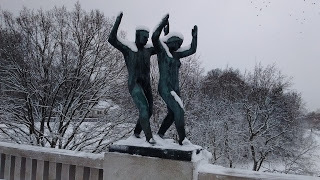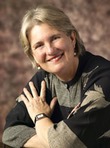Barbara Sjoholm's Blog, page 6
March 21, 2017
Sami Parliament Persuades Norwegian Pension Fund to Divest from DAPL
In an act of international solidarity between indigenous peoples, the Sami parliament in Norway has persuaded the country’s second largest pension fund to withdraw its money from companies linked to a controversial oil project backed by Donald Trump.
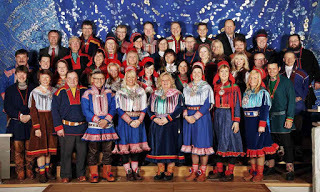
The project to build the 1,900 km Dakota Access oil pipeline across six US states has prompted massive protests from Native American activists at the Standing Rock Sioux reservation.
This week, after lobbying by the Sami parliament, Norway’s local authority pension fund KLP announced it would sell off shares worth $58m in companies building the pipeline.
Vibeke Larsen, president of the Sami parliament, said the pension fund announced the move when she arrived at a meeting in Oslo to discuss Dakota Access. “We feel a strong solidarity with other indigenous people in other parts of the world, so we are doing our part in Norway by putting pressure on the pension funds,” she told the Guardian.
Read the full article by Rachel Fixsen in the Guardian.
Published on March 21, 2017 13:36
March 13, 2017
Clearing Out translation wins prize from American-Scandinavian Foundation
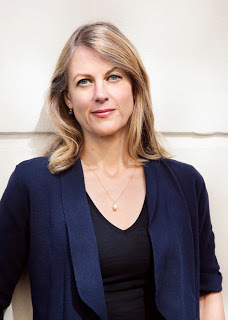 Helene Uri, author of Clearing Out
Helene Uri, author of Clearing OutI'm pleased to announce that the American-Scandinavian Foundation in New York recently awarded me the Nadia Christensen Prize for my translation of Clearing Out [Rydde ut] by Norwegian author Helene Uri.
I previously wrote about Helene Uri and this particular novel in a
The ASF also gave the Leif and Inger Sjöberg Award, recognizing distinguished effort by a translator who has not previously published a literary translation, to Kara Billey Thordarson, from Red Deer, Alberta, for her translation of Stormviðvörun by Icelandic author Kristín Svava Tómasdóttir.
Excerpts of both translations will appear in the Spring issue of Scandinavian Review, the journal published by The American-Scandinavian Foundation. Another excerpt from Clearing Out was published in 2016 by Two Lines, the translation review.
Published on March 13, 2017 14:06
February 6, 2017
Sami National Day
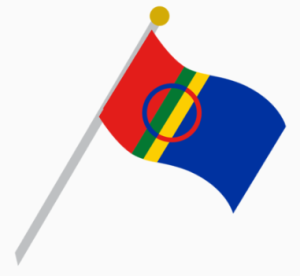
Today, February 6, is national Sami day, celebrated in the Nordic countries, as it is around the world, wherever Sami people and their friends and allies live.
Here in the Pacific Northwest, it has been celebrated for several years at the Scandinavian Cultural Center at Pacific Lutheran University outside Tacoma. The festivities for today are now re-scheduled for Tuesday, Feb. 7, at 2:30 because of snow and school closings.
2017 holds special resonance. A hundred years ago, in Trondheim, the first pan-Sami congress took place. This 1917 congress was largely conceived and organized by Herders and their families came from all over Norway and Sweden. They debated a number of issues, including schooling for their children, herding rights, conflicts with settlers, and the use of “Sami” instead of “Lapp.”
Today in Trondheim, the festivities were attended by Sweden’s Culture Minister Alice Bah Kuhnke and by Norway’s King Harald and Prime Minister Erna Solberg will also attend. Solberg was quoted as saying, "Previously, we have apologized on behalf of the Norwegian people for the Norwegianizing policy that was led for not only decades, but in fact hundreds of years, where we tried to remove the Sami’s cultural expression."
Published on February 06, 2017 13:59
February 4, 2017
ALTA and other translation organizations stand up for cross-cultural exchange
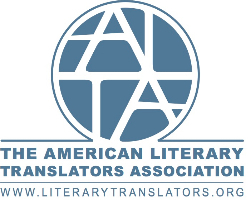
A Joint Statement on the Executive Order
Restricting Immigrant and Refugee Entry into the US
Dear ALTA colleagues and friends,We the undersigned wish to affirm that freedom of expression and unfettered exchange of ideas are among the core tenets of our society as much as they are indispensable means of cross-cultural understanding and peaceful co-existence. Writers, translators and interpreters would be vulnerable to the far-reaching consequences of the travel ban; these professionals are crucial to the advancement of cross-cultural cooperation, and their efforts would be harmed by the corrosive effects of distrust and exclusion. If national security is our priority, we should recognize that we are safer with the knowledge translators provide about the culture, values, and humanity of other countries. At a time in history when people feel so divided, we believe that our stories—and the people who make it possible to hear them told—are critical to sustaining our coexistence. We voice our support for the refugees fleeing wars—for whom the U.S. has always been a place of refuge, and whose spirit of creativity and innovation has made our cultural and artistic life all the richer and infinitely more diverse. Turning away today's refugees may amount to turning down immeasurable human potential. We therefore urge the President to rescind the travel ban immediately.
American Literary Translators Association
Center for the Art of Translation
PEN America Translation Committee & Subcommittee on Freedom of Expression
Red T
Translationista
Words Without Borders
Published on February 04, 2017 10:24
September 5, 2016
Fossil Island wins Historical Novel Society award for best indie novel

Over the past weekend, at the Historical Novel Society conference, held this year in Oxford, England, my novel Fossil Island was chosen as a best indie novel of 2015. I was sorry I couldn't attend to win in person (and also just to participate in what seems to have been, from the Twitter feed, a pretty jolly event, with a lot of dressing up and fascinating panels). Never mind, I will definitely be at the next conference in Portland, OR, so very much closer to home. Thanks, HNS! It's a great organization and I appreciate the honor.
A couple of months ago, last year's winner, Anna Belfrage, posted this interview with me about Fossil Island. Anna is Swedish but writes her fine historical novels in English.
The end of summer turned out to be a lucky time for me. A couple of weeks ago it was also announced that I'd been awarded an NEA fellowship in translation. The project is Helene Uri's novel, Clearing Out, which I wrote about here in November, 2014. I'm still looking for a publisher for this fantastic novel from Norway with a Sami theme.
Published on September 05, 2016 15:22
April 15, 2016
Joiking of Identity and Sisterhood: Sara Ajnnak
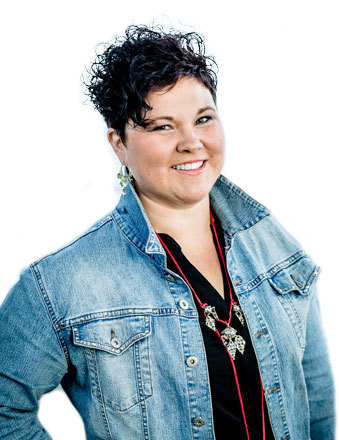
In February I had the good fortune to be invited to the winter market in Jokkmokk, Sweden to give a slideshow and talk on Emilie Demant Hatt. I stayed for the whole three days of the festival, which has taken place for over 400 years. The winter market is a place where the Sami people have congregated to trade goods and gossip, to meet friends and sweethearts, to joik and attend church services. Now that the winter market is connected with the museum Ájtte and events and exhibits have spread out through the town to the schools, churches, and community centers, there are more opportunities to see films, hear lectures, admire Sami handicraft, and listen to music.
I’ve long been deeply drawn to joik music, whether in its pure form of vocalization or accompanied by drums, guitars, and electronic keyboards. This February I went to a couple of evening concerts by well-known Sami singers, but I have to say that the most riveting joiking I heard was on a CD by a young Sami woman, Sara Ajnnak, which was playing in the shop of the Viltok Sisters as background music.
Sara Ajnnak is from Västerbotten, based in Gargnäs, near Sorselse in the middle of Southern Sápmi. She comes from a herding family and knows her way around a snowmobile. After high school she studied the theater arts, but realized she didn’t want to be an actor, and turned to singing and eventually writing her own songs.The language her people would have spoken up to a couple of generations ago was Ume Sami, now one of the languages that’s halfway to extinction. Yet it lives on in the words of joiks once recorded and saved in archives. It’s to these archives that Sara turned when she was looking to connect with her past and find a way to joik from her heart.
On her website she writes (in Swedish, this is my translation):
For a long time I only knew half of myself. I felt I was missing a part of myself and couldn’t really be me. My Sami identity was tattered, the language I should know wasn’t there, but I was searching inside for myself. Out of frustration, I found my way to the joik and there I discovered a piece of the puzzle to my identity. It wasn’t easy, the joik had long since disappeared from my geographical area. I spent hours in archives, while the evenings were devoted to imitating the sound recordings from the early 1900s. It really was both anger and frustration that led me to the joik and eventually the stage's spotlight. My joik career took off and I traveled around Sápmi to various venues as a traditional joiker. But I still felt tattered inside, and searched for more puzzle pieces to become whole.
I grew up in a reindeer herding family in Västerbotten [a northern province in Sweden]. From childhood I’ve taught myself to relate to the grandeur of nature's changing reality. Life in reindeer husbandry has affected and affects me constantly. My life has been about trying to survive, and the joik has been a release where I was able to let out my feelings. In the candlelight, my pen has run quickly; reflections on life turned into lyrics.
When I started my journey to regain my language, I grew as a person. Now I could for the first time stand up and say the words that have long been forgotten in my family. Step by step, I grew as a person and took my language with me up onto the stage.
My history and path into the music hasn’t been straightforward, but has been characterized by low self-confidence, hard work and language barriers. It took more than 34 years before I dared to believe in myself and my ability as an artist. In September of 2014 my first album Suojggat came out and I finally felt at home. I felt pretty soon after I released my debut album that music was my valve, allowing me to freely create from an emotional place and making room for me to tell my own story. I felt that the stories and perspectives from my geographic area in Sápmi were missing and through writing and creating music, my soul also became whole.
Sara Ajnnak has two CDs, Suojggat and Ráhtjat, with songs that are both soulful and danceable, to a bouncy electronic beat. In a music video of her letting her voice ring out in a wintery world (a video with some beautiful slow-motion filming of a reindeer separation, as well), Ajnnak joiks in Sami of women’s empowerment and equal rights. The lyrics show up at the end of the video, in English:
I raise my voice/ To free up my mind/ Stand up for myself/ Sisterhood
Published on April 15, 2016 09:16
April 4, 2016
Fossil Island a finalist for the Historical Novel Society Indie Award
[image error]
The winner will be announced at the annual conference of the Historical Novel Society (Sept 2-4, 2016) in Oxford, England.
If you don't know this wonderful organization, based in England but with a sizeable North American membership, see their website at:
https://historicalnovelsociety.org/co...
Published on April 04, 2016 16:40
January 25, 2016
IA winter's day in Oslo's Vigeland Park. Happy...
Published on January 25, 2016 10:22
January 9, 2016
Emilie Demant Hatt Lecture with Slides at Jokkmokk in February
The Jokkmokk Market above the Arctic Circle is a three plus day event February 4-6 that takes place every year--and has for 400 years. In the past Sami gathered in Jokkmokk, Sweden to barter and sell, to pay taxes, and to attend church. Now the Market is a cultural feast of music, arts, lectures, films, and lots of outdoor activities as well. See more at http://www.jokkmokksmarknad.se/
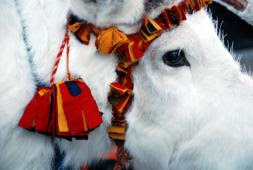
This year on Friday, February 5, at 11:30 a.m. I'll be talking (indoors, in the museum) about the Danish ethnographer and artist Emilie Demant Hatt. I'm excited to share my research and show slides of her beautiful paintings. Please join me in Jokkmokk if you like cold, frost, and hot drinks, as well as a chance to experience some of the best of Sami culture today.

This year on Friday, February 5, at 11:30 a.m. I'll be talking (indoors, in the museum) about the Danish ethnographer and artist Emilie Demant Hatt. I'm excited to share my research and show slides of her beautiful paintings. Please join me in Jokkmokk if you like cold, frost, and hot drinks, as well as a chance to experience some of the best of Sami culture today.
Published on January 09, 2016 15:04
January 2, 2016
Repatriating the Sami Cultural Heritage in Norway
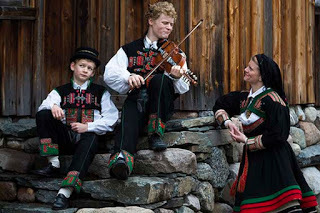 Folk Dance Troupe from Setesdal at Folkemuseum
Folk Dance Troupe from Setesdal at Folkemuseum Just outside Oslo, on the island of Bygdøy, stands the Norwegian Museum of Cultural History, the Norsk Folkemuseum. Founded in 1894 to collect, preserve, and display all manner of Norwegian domestic items, from clothing to butter churns, the grounds also contain dozens of buildings from every part of Norway: original houses, barns, and churches, from the humble to the grand, disassembled and reconstructed and now scrupulously maintained. It’s the largest open-air museum in Norway and one of the earliest in the world. Here (especially on a warm summer’s day) it’s lovely to stroll among the mountain farm seters and stave churches, set among meadows and birch trees. The Folkemuseum also houses its collections, some of which go back to the 1500s, indoors in climate-controlled rooms.
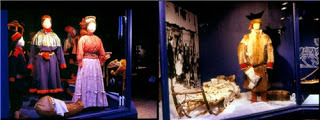 Norsk Folkemuseum Artifacts collected from the Sami people in Norway weren’t part of the original scheme for the museum. Their clothing and objects of daily use were instead the nucleus of the University of Oslo’s Ethnographic Museum, displayed with artifacts from people around the world. Not until 1951 was the Sami collection transferred to the Folkemuseum “with the aim of placing the Sami on a more equal footing with other Norwegian citizens.” The assemblage of 2600 objects was augmented by further collecting, not only of objects but of photographs and audio recordings of the Sami language and joiks. Today the collection consists of some 4500 catalog numbers.
Norsk Folkemuseum Artifacts collected from the Sami people in Norway weren’t part of the original scheme for the museum. Their clothing and objects of daily use were instead the nucleus of the University of Oslo’s Ethnographic Museum, displayed with artifacts from people around the world. Not until 1951 was the Sami collection transferred to the Folkemuseum “with the aim of placing the Sami on a more equal footing with other Norwegian citizens.” The assemblage of 2600 objects was augmented by further collecting, not only of objects but of photographs and audio recordings of the Sami language and joiks. Today the collection consists of some 4500 catalog numbers.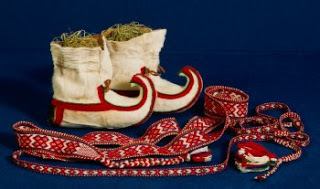 That collection is about to be halved. Since the 1970s, when the Sami began to organize politically in a more confrontative manner than before, relations between the Norwegian state and its Sami citizens have shifted considerably. The aims of the Sami, to be regarded as an indigenous people with legal and moral rights to land, language, and cultural heritage, have been widely debated in Norway, but have resulted in a number of reforms and new initiatives. Along with the establishment of Sami museums and cultural centers around the country came discussions of repatriating Sami artifacts. These discussions weren’t limited to Norway—it’s been a subject of great interest in other Nordic countries with a Sami minority as well as internationally—but Norway has moved ahead now with a concrete plan to divide its collection, with 50% to remain at the Folkemuseum and 50% to be returned, with full ownership rights, to the six Sami museums, depending on the geographic origin of the objects.
That collection is about to be halved. Since the 1970s, when the Sami began to organize politically in a more confrontative manner than before, relations between the Norwegian state and its Sami citizens have shifted considerably. The aims of the Sami, to be regarded as an indigenous people with legal and moral rights to land, language, and cultural heritage, have been widely debated in Norway, but have resulted in a number of reforms and new initiatives. Along with the establishment of Sami museums and cultural centers around the country came discussions of repatriating Sami artifacts. These discussions weren’t limited to Norway—it’s been a subject of great interest in other Nordic countries with a Sami minority as well as internationally—but Norway has moved ahead now with a concrete plan to divide its collection, with 50% to remain at the Folkemuseum and 50% to be returned, with full ownership rights, to the six Sami museums, depending on the geographic origin of the objects. 
Árran Lule Sami Center The process of selecting the objects began in late 2015 and will continue throughout 2016. In some cases, the transfer depends on upgrading facilities at the Sami museums and dealing with problems associated with earlier preservation techniques, which included the use of toxic substances and pesticides. The Norwegian state will be funding most of the project, “in accordance with the country’s obligations towards the Sami as in indigenous people.” The project is meant to be completed in 2017.
The project is called Bååstede, which means “return” in the South Sami language.
The six Sami Museums in Norway: Árran Lule Sami Center
Deanu andVarjjat Museumsiida (including Deanu, Varjjat and the East Sami Museums and themuseum of the Sami artist John Savio).
The Center for Northern Peoples
RiddoDuottarMuseat(including SVD museum in Karasjok, Guovdageainnu Gilisillju in Kautokeino,Porsanger Museum and Kokelv Sea Sami Museum)
Saemien Sijte(the South Sami Museum)
Vardobaiki Center
Published on January 02, 2016 11:29

